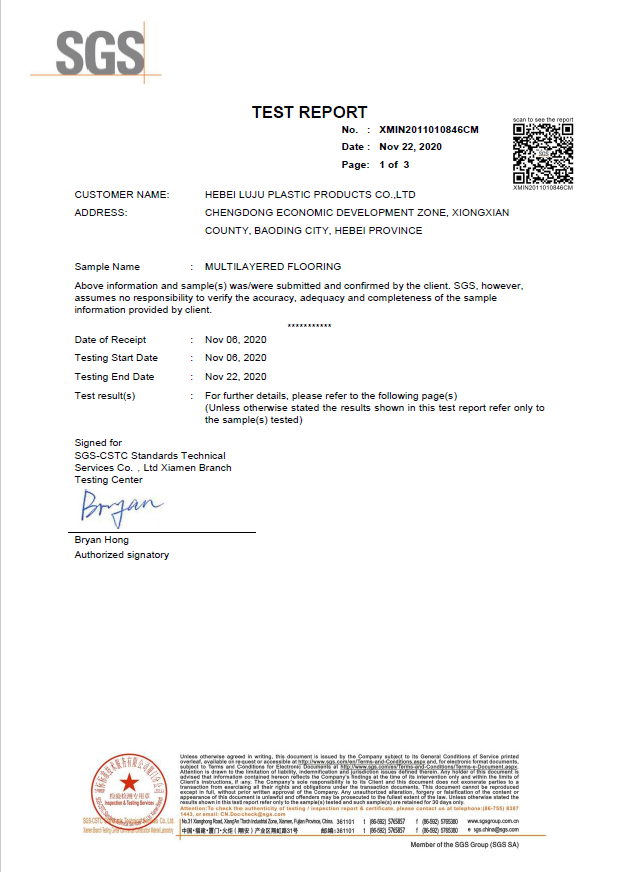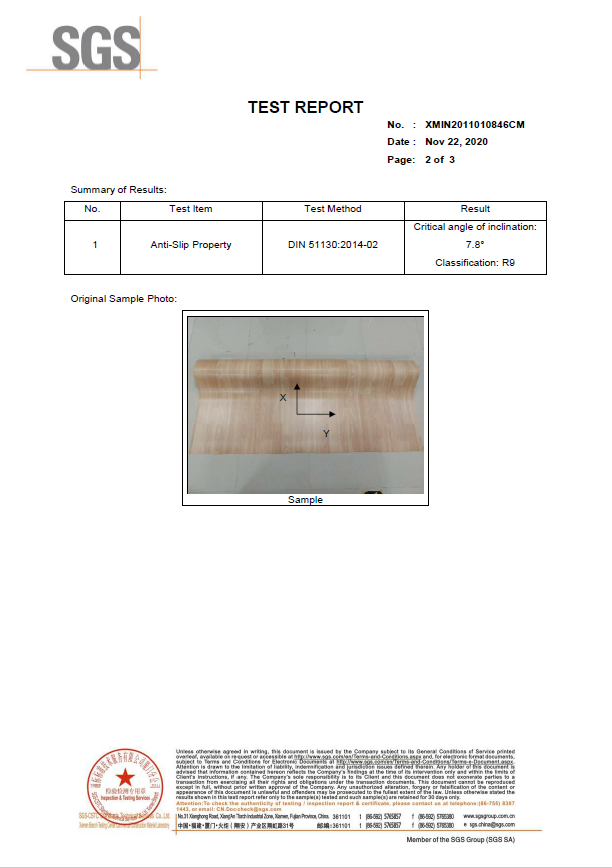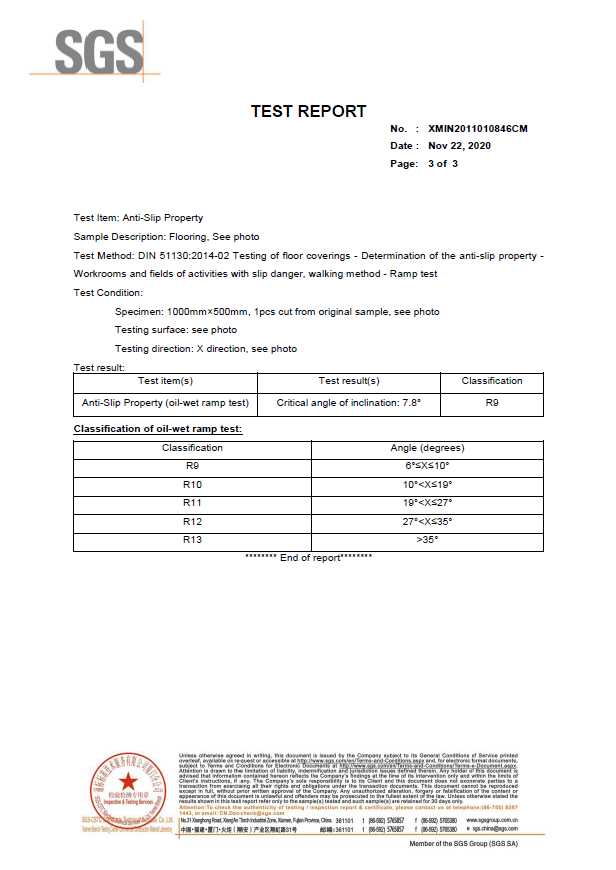


I. Anti-slip technology principle: Dual design of materials and structure
“Physical grip” with anti-slip texture on the surface
- The wear-resistant layer on the surface of PVC flooring (mostly made of PVC material) is pressed into fine concave-convex structures (such as lychee texture, frosted texture, diamond texture, etc.) through molds. When dry, it increases the friction area with the sole of the shoe; when wet, the texture can lock in moisture to form a “water film buffer layer”, preventing the sole of the foot from directly contacting the smooth surface, similar to the “suction cup effect” to enhance adhesion.
- Some high-end products will add nano anti-slip particles (such as silica), embedded in the surface of the wear-resistant layer, further enhancing the roughness. When wet, the foot feels more “squeaky”.
“Dynamic buffering” of elastic substrates
- The bottom layer of the PVC floor is made of elastic foam materials such as IXPE and EVA. When under pressure, it will slightly deform to fit the contour of the shoe sole, reducing the tendency to slide. This “soft against hard” design provides dynamic anti-slip support especially when running or making sudden stops.
Ⅱ. High Anti-slip Scene Adaptation: Where Are They Most Needed?
Public safety sensitive areas
Hospital corridors / bathrooms: In environments with water accumulation and disinfectant, anti-slip plastic flooring can reduce the risk of patients and caregivers slipping. Data from a certain tertiary hospital shows that after the replacement, slip accidents decreased by 65%.
Kindergartens / early education centers: Children move frequently, and elastic anti-slip flooring can not only cushion falls but also prevent collision injuries caused by slippery floors.
Gyms / swimming pool areas: In damp areas such as equipment areas and shower rooms, special anti-slip plastic flooring (with added rubber components) can resist sweat and water accumulation, and even resist long-term immersion without reducing its anti-slip property.
High-risk areas in households
Kitchen / balcony: Oil stains and water stains tend to accumulate. The anti-slip texture of the plastic flooring combined with the stain-resistant surface layer can maintain the friction coefficient after cleaning; some products have obtained “food contact grade certification”, making them more suitable for household use.
Elderly / children’s rooms: The combination of anti-slip and elasticity can reduce injuries caused by slippery floors or falls, especially suitable for families with people with limited mobility.
